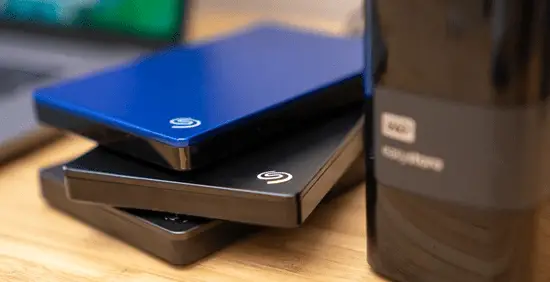
- Best hard drive 2015 for mac movie#
- Best hard drive 2015 for mac portable#
- Best hard drive 2015 for mac software#
- Best hard drive 2015 for mac professional#
Their defining characteristic is the ability to swap drives in and out of their multi-bay chassis easily, so most provide quick access to the drive bays at the front of the device.
Best hard drive 2015 for mac professional#
They're mostly intended for professional use in editing studios, surveillance control rooms, and the like. The largest desktop drives are often much, much bulkier than the first two categories, so big that you'll want to stick them under your desk or in a dedicated server closet. In the case of these and single-platter-drive products, you're not meant to swap out the drive or drives inside. These larger models are more expensive but also much more capacious-think 16TB or more (in that case, populated by two 8TB drive mechanisms). The next size up for consumer desktop drives is about the same height but twice as wide, to accommodate more than one platter-based hard drive mechanism in the chassis.
Best hard drive 2015 for mac software#
In addition to storing large media collections, these drives can also serve as inexpensive repositories for backups of your computer's hard drive that you schedule, using either software that comes with the drive or a third-party backup utility. Most are roughly 5 inches tall and 2 inches wide. (Of course, in this scenario, your files are going to have to stay at your desk.)Ī desktop drive with a single platter mechanism inside will typically use a 3.5-inch drive inside and comes in capacities up to 12TB, though a few 16TB single drives in external chassis have started to emerge. We define these as having one or more spinning-platter drives inside and requiring a dedicated power cable plugged into AC power to work. In that case, your best option is a desktop-class hard drive.
Best hard drive 2015 for mac movie#
If you have a large media-file collection-perhaps you are a photo or video editor, or maybe a movie buff-you'll likely need several terabytes of space in which to store it.
Best hard drive 2015 for mac portable#
Physical Size Matters: Get a Desktop Drive, or a Portable One?

And let's not even talk about the cost of 4TB and 8TB external SSDs. A 2TB SSD, though? Expect to pay at least two to three times as much as you would for that 2TB hard drive. You can find a 2TB portable hard drive with ease (possibly even a 4TB one, depending on the day) for less than $100. Larger external drives designed to stay on your desk or in a server closet still almost exclusively use spinning-drive mechanisms, taking advantage of platter drives' much higher capacities and much lower prices compared with SSDs.Īnd portable hard drives can be a great value if what you need is raw capacity above all else. Still, while external SSDs are cheaper than they were a few years ago (see the best we've tested at the preceding link), they're far from a complete replacement for spinning drives. Because there is no spinning platter or moving magnetic head, if you bump the SSD while you're accessing its data, there is no risk that your files will become corrupted and unreadable.

Not only is it faster to read and write data stored in flash cells, but it's also safer. Practically speaking, this means you can move gigabytes of data (say, a 4GB feature-length film, or a year's worth of family photos) to an external SSD in seconds rather than the minutes it would take with an external spinning drive. External SSDs offer at least twice that speed and sometimes much more, with typical results on our benchmark tests in excess of 400MBps. Just how much faster is it to access data stored in flash cells? Typical read and write speeds for consumer drives with spinning platters are in the 100MBps to 200MBps range, depending on platter densities and whether they spin at 5,400rpm (more common) or 7,200rpm (less common). Unlike a conventional disk-based hard drive, which stores data on a spinning platter or platters accessed by a moving magnetic head, an SSD uses a collection of flash cells-similar to the ones that make up a computer's RAM-to save data. Solid-state drives (SSDs) have fewer moving parts than traditional hard drives, and they offer the speediest access to your data. Hard drives may get you more capacity for your dollar by far, but first you need to consider a major difference in external storage these days: the hard drive versus the SSD. Weighing the Need for Speed: Hard Drive or SSD? This guide will help you make sense of all these and many more questions that arise while you're shopping for an external hard drive.


 0 kommentar(er)
0 kommentar(er)
